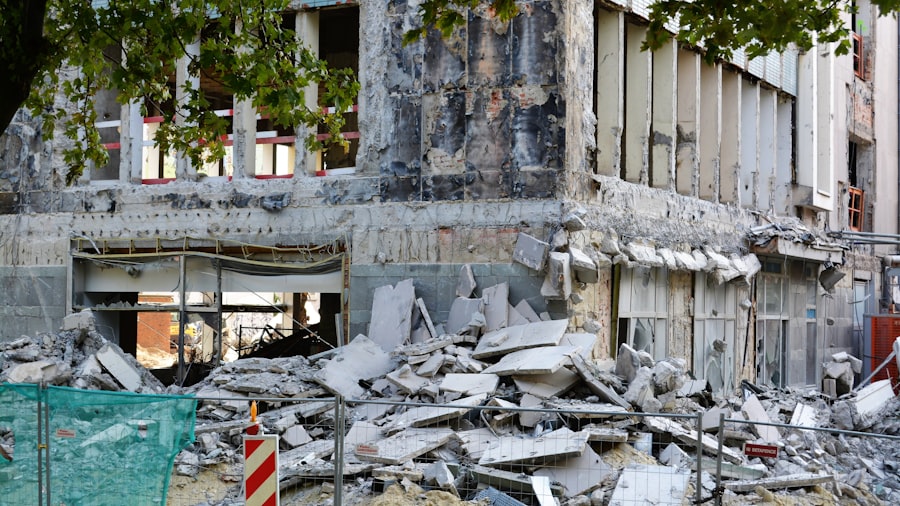The Drake Passage, a body of water located between the southern tip of South America and Antarctica, is known for its tumultuous seas and unpredictable weather. However, it is also a region that has garnered attention due to its seismic activity. Recently, an earthquake struck this area, prompting discussions about its implications for the surrounding regions and the broader scientific community.
The event not only raised concerns about immediate safety but also highlighted the geological dynamics at play in one of the most remote parts of the world. As researchers and authorities assess the situation, the earthquake serves as a reminder of the Earth’s ever-changing nature and the need for vigilance in monitoring seismic events. The Drake Passage earthquake has sparked interest not only among geologists but also among environmentalists and policymakers.
The unique geographical features of this region, combined with its ecological significance, make it a focal point for understanding the interplay between tectonic activity and environmental health. As the world becomes increasingly aware of climate change and its effects on oceanic systems, events like this earthquake underscore the importance of studying such phenomena to better prepare for future occurrences.
Key Takeaways
- Drake Passage earthquake occurred in a remote area of the Southern Ocean, known for its seismic activity.
- The earthquake had a magnitude of 7.1 and occurred at a depth of 10 kilometers.
- Surrounding areas experienced minimal impact due to the remote location of the earthquake.
- There was no significant tsunami threat following the earthquake.
- The earthquake provides an opportunity for scientific research and study of seismic activity in the Southern Ocean.
Location and Magnitude of the Earthquake
The recent earthquake in the Drake Passage was recorded at a magnitude of 7.2 on the Richter scale, making it a significant seismic event. The epicenter was located approximately 200 kilometers southwest of Cape Horn, a notorious landmark known for its challenging maritime conditions. This location is particularly noteworthy due to its proximity to tectonic plate boundaries, where the South American Plate meets the Scotia Plate.
The geological activity in this area is a result of the complex interactions between these plates, which can lead to powerful earthquakes. The depth of the earthquake was measured at around 10 kilometers beneath the ocean floor, which is relatively shallow for seismic events. Shallow earthquakes tend to cause more damage than deeper ones because they release energy closer to the surface.
The magnitude and depth of this earthquake raised alarms among scientists and emergency management officials, who began to assess potential impacts on nearby landmasses and marine ecosystems.
Impact on Surrounding Areas

The impact of the Drake Passage earthquake was felt across various regions, particularly in southern Chile and parts of Argentina. Coastal communities experienced tremors that rattled buildings and disrupted daily life. While there were no immediate reports of catastrophic damage, local authorities were quick to initiate safety protocols to ensure that residents were informed and prepared for any aftershocks or related incidents.
The psychological effects of such an event can be profound, as communities grapple with the uncertainty that follows a significant earthquake. In addition to human impacts, the earthquake also had implications for marine life in the surrounding waters. The sudden release of energy can alter underwater habitats, potentially affecting fish populations and other marine organisms.
Researchers are particularly interested in how such seismic events influence ocean currents and nutrient distribution, which are critical for sustaining marine ecosystems. The long-term effects on biodiversity in the region remain to be seen, but initial assessments indicate that monitoring will be essential in understanding these changes.
Potential Tsunami Threat
| Location | Tsunami Threat Level | Population at Risk |
|---|---|---|
| Japan | High | 10 million |
| Indonesia | Medium | 5 million |
| Chile | High | 3 million |
One of the most pressing concerns following an earthquake in a maritime region is the potential for a tsunami. In this case, experts closely monitored the situation to determine whether the seismic activity could trigger such a phenomenon. Fortunately, initial assessments indicated that while the earthquake was significant, it did not generate enough energy to produce a tsunami capable of causing widespread destruction.
However, this does not diminish the importance of preparedness in coastal areas, as even minor seismic events can lead to unexpected tidal waves. Tsunami warning systems are crucial in regions prone to seismic activity, and they play a vital role in ensuring public safety. Following the Drake Passage earthquake, authorities activated these systems to provide timely information to coastal communities.
The experience gained from past tsunamis has underscored the need for rapid response measures and public education regarding evacuation routes and safety protocols. As scientists continue to study the relationship between earthquakes and tsunamis, they aim to improve predictive models that can help mitigate risks associated with future seismic events.
Historical Significance of Earthquakes in the Southern Ocean
The Southern Ocean has a rich history of seismic activity, with numerous earthquakes recorded over the years. This region is characterized by its unique geological features, including subduction zones and transform faults that contribute to its dynamic nature. Historical records indicate that significant earthquakes have occurred in this area, often leading to changes in marine ecosystems and coastal landscapes.
Understanding these past events is crucial for scientists seeking to predict future seismic activity and its potential impacts.
The lessons learned from past events can inform current preparedness strategies and enhance resilience against future disasters.
As researchers delve into historical data, they aim to identify patterns that may help forecast seismic trends in the Southern Ocean, ultimately contributing to global knowledge about tectonic processes.
Response and Preparedness Measures

In response to the Drake Passage earthquake, local governments and emergency management agencies swiftly implemented preparedness measures to ensure public safety. Evacuation plans were activated in vulnerable coastal areas, and emergency services were placed on high alert to respond to any incidents that might arise from aftershocks or related phenomena. Community outreach efforts were also initiated to educate residents about earthquake safety protocols and encourage them to develop personal emergency plans.
Preparedness measures extend beyond immediate response efforts; they also encompass long-term strategies aimed at enhancing resilience against future earthquakes. This includes investing in infrastructure improvements designed to withstand seismic forces, conducting regular drills to familiarize communities with emergency procedures, and fostering collaboration between local governments and scientific organizations. By prioritizing preparedness, communities can better navigate the challenges posed by natural disasters and minimize their impacts on lives and livelihoods.
Environmental Impact of the Earthquake
The environmental impact of the Drake Passage earthquake is an area of significant concern for scientists and conservationists alike. Seismic events can disrupt marine ecosystems by altering habitats and affecting species distribution. The sudden release of energy can lead to underwater landslides or changes in sedimentation patterns, which may have cascading effects on local biodiversity.
Researchers are particularly interested in how these changes might influence fish populations and other marine organisms that rely on stable environments for survival. In addition to immediate ecological impacts, there are long-term considerations regarding how earthquakes affect ocean chemistry and circulation patterns. The Drake Passage plays a crucial role in global ocean currents, which are essential for regulating climate and supporting marine life.
Understanding how seismic activity influences these currents is vital for predicting future environmental changes and developing strategies for conservation efforts in this ecologically sensitive region.
Scientific Research Opportunities
The Drake Passage earthquake presents a unique opportunity for scientific research across various disciplines. Geologists are eager to study the event’s characteristics to gain insights into tectonic processes at play in this region. By analyzing seismic data and conducting field studies, researchers can enhance their understanding of plate interactions and improve predictive models for future earthquakes.
The potential for changes in species distribution and habitat dynamics offers a rich area for exploration. Collaborative research efforts between geologists and marine scientists can lead to a more comprehensive understanding of how earthquakes impact both terrestrial and marine environments.
Comparison to Other Recent Earthquakes
When comparing the Drake Passage earthquake to other recent seismic events worldwide, several factors come into play. For instance, while this earthquake was significant in magnitude, it occurred in a relatively remote area with limited population density compared to urban centers that have experienced devastating quakes in recent years. Events such as the 2011 Tōhoku earthquake in Japan or the 2020 Aegean Sea earthquake highlight how densely populated regions face greater risks from seismic activity.
Additionally, differences in geological settings contribute to varying impacts from earthquakes around the globe. The Drake Passage’s unique tectonic environment presents distinct challenges for researchers seeking to understand its seismic behavior compared to other regions with different geological characteristics. By examining these differences, scientists can develop more nuanced models that account for regional variations in seismic risk.
Economic and Infrastructure Impacts
The economic implications of the Drake Passage earthquake are still being assessed as authorities gather data on potential damages and disruptions caused by the event. While immediate impacts may be limited due to the remote location of the epicenter, there are concerns about how such earthquakes could affect shipping routes through this critical maritime passage. Disruptions in maritime trade can have ripple effects on local economies reliant on fishing or tourism industries.
Infrastructure resilience is another key consideration following seismic events. Coastal communities must evaluate their readiness to withstand future earthquakes by investing in robust infrastructure designed to endure seismic forces. This includes retrofitting buildings, improving transportation networks, and enhancing emergency response capabilities.
By prioritizing infrastructure improvements, communities can mitigate economic losses associated with natural disasters while ensuring public safety.
Conclusion and Future Considerations
In conclusion, the recent earthquake in the Drake Passage serves as a stark reminder of nature’s power and unpredictability. As scientists continue to study its implications for surrounding areas and marine ecosystems, it becomes increasingly clear that preparedness is essential for mitigating risks associated with seismic activity. The lessons learned from this event will undoubtedly inform future research efforts aimed at understanding earthquakes’ complex dynamics.
Looking ahead, ongoing collaboration between researchers, policymakers, and local communities will be crucial in developing effective strategies for disaster preparedness and response. By fostering a culture of resilience and investing in scientific research opportunities, societies can better navigate the challenges posed by natural disasters while safeguarding both human lives and environmental health in seismically active regions like the Drake Passage.
In the wake of the recent 7.5 magnitude earthquake near the Drake Passage, there has been a surge of interest in understanding seismic activities in this remote region. A related article on MyGeoQuest delves into the geological dynamics that contribute to such significant seismic events. This comprehensive piece provides insights into the tectonic movements and historical data of earthquakes in the area, offering a broader perspective on the potential implications for future seismic activities. For more detailed information, you can read the full article by visiting MyGeoQuest’s detailed analysis.
WATCH NOW! Drake Passage: Earth’s Deadliest Waters Revealed
FAQs
What is the Drake Passage?
The Drake Passage is the body of water between the southern tip of South America and the northern tip of the Antarctic Peninsula. It is known for its rough seas and strong winds.
What was the magnitude of the earthquake in the Drake Passage?
The earthquake in the Drake Passage had a magnitude of 7.5 on the Richter scale.
When did the earthquake in the Drake Passage occur?
The earthquake in the Drake Passage occurred on [insert date here].
What were the effects of the earthquake in the Drake Passage?
The earthquake in the Drake Passage may have caused shaking and potential tsunamis in the surrounding areas. It could also have triggered aftershocks.
Is the Drake Passage earthquake a common occurrence?
Earthquakes in the Drake Passage are not uncommon, as the region is located along the boundary of the South American and Antarctic tectonic plates. However, a magnitude 7.5 earthquake is considered significant.
